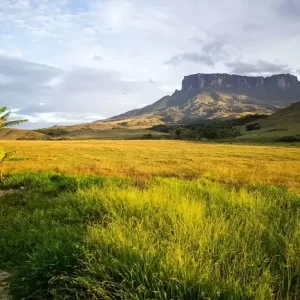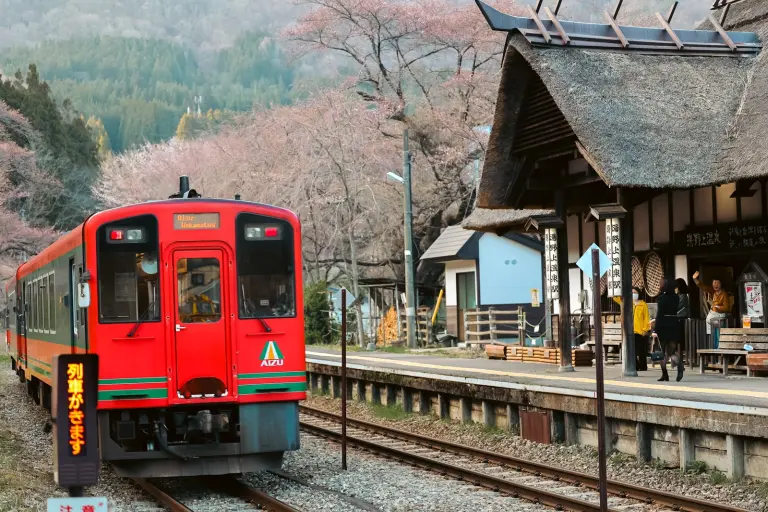Nestled in the serene fields of Namibia, the Hoba meteorite is a rare natural phenomenon. Not only is it the largest iron mass ever discovered on Earth, but it also astonishes scientists with a peculiar fact: despite falling from space, Hoba left no significant impact crater.
From Space to Earth
Discovered in 1920 by a farmer, the Hoba meteorite weighs a staggering 60 tons and measures 9 feet (2.7 meters) in length and width, with a thickness of 3 feet (1 meter). Composed of approximately 84% iron and 16% nickel, its origins trace back to the asteroid belt between Mars and Jupiter, formed over 4.5 billion years ago.
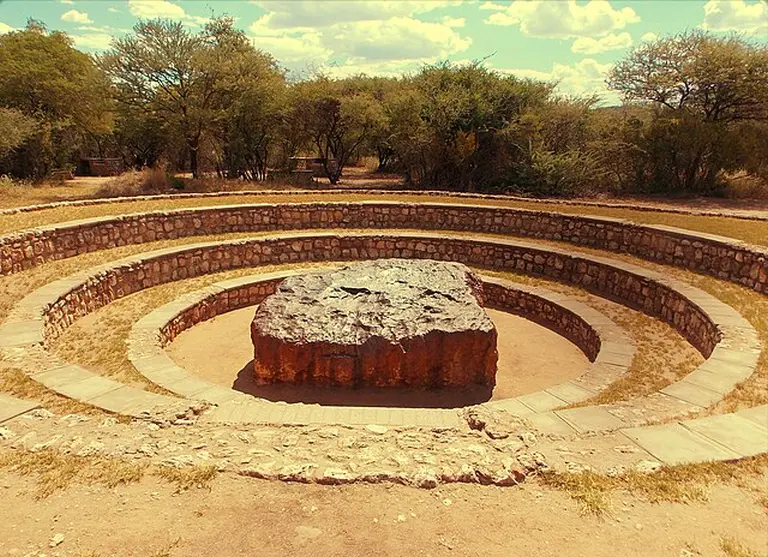
Hoba’s interstellar journey ended on Earth roughly 80,000 years ago, but its “soft landing” defied the destructive norm associated with meteorites of its size.
Why Is There No Impact Crater?
Typically, large meteorites create massive craters due to their tremendous momentum as they enter the atmosphere at speeds of tens of kilometers per second. However, Hoba stands apart. Scientists suggest:
- Shallow Entry Angle: Hoba likely entered the atmosphere at a very low angle, reducing its impact velocity.
- Unusually Low Speed: By the time it reached the ground, its speed may have been just a few hundred meters per second, significantly slower than most meteorites.
- Unique Shape: Its flat, anvil-like shape could have distributed the impact force, minimizing the chance of forming a deep crater.
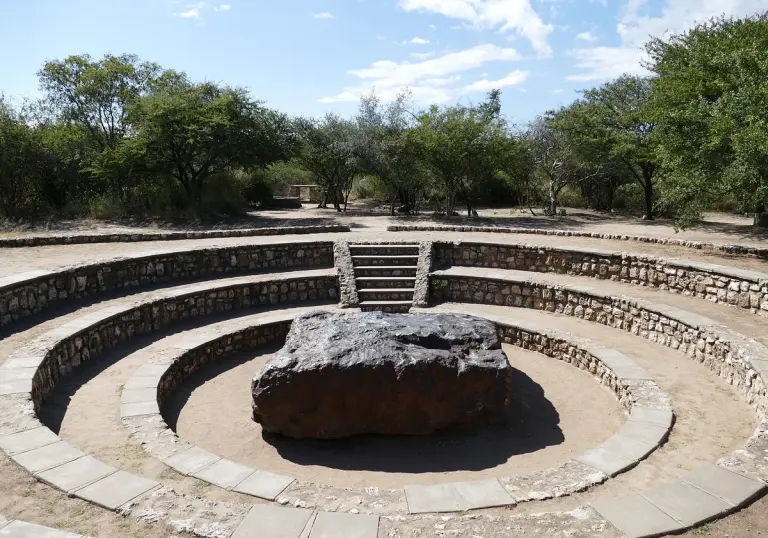
Some theories propose that an initial small crater, about 20 meters in diameter and 5 meters deep, might have existed but eroded over time, leaving the meteorite lying flat as it is today.
The Allure of the Hoba Meteorite
Local communities refer to Hoba as “Ghantsiis”, meaning “the fallen star,” believing it possesses supernatural powers. While no miracles are attributed to it, Hoba captivates with its immense scientific and cultural significance. As a “time capsule” from the early Solar System, it provides a unique glimpse into conditions that existed billions of years ago.
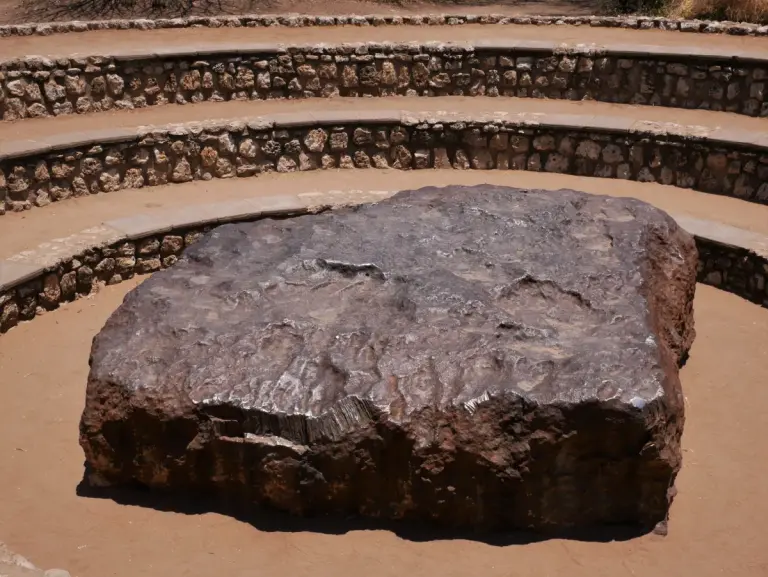
Exploring Hoba: A Journey to a Historical Rock
The Hoba meteorite is located on private land near Grootfontein, Namibia, about 430 kilometers (267 miles) from the capital, Windhoek—a drive of just over 4 hours. The site is well-designed for visitors, offering amenities such as kiosks, restrooms, and souvenir shops.
For adventurers, the meteorite is accessible by car or via bus services connecting Windhoek to Grootfontein. After visiting Hoba, you can stay at Meteorite Rest Camp, located just 2 miles (3 kilometers) away, or choose from various lodges and guesthouses in Grootfontein.
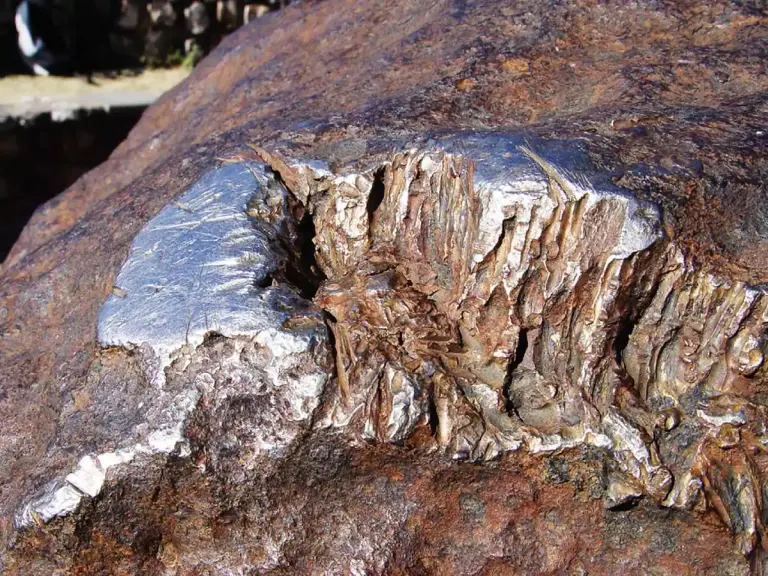
Endless Mystery and Fascination
The Hoba meteorite is not only Earth’s largest iron mass but also an intriguing scientific puzzle. Its pristine survival is a testament to the wonders of the universe. Whether you’re a scientist, an astronomy enthusiast, or simply a curious traveler, Hoba invites you to marvel at and uncover the secrets of a relic from billions of years ago.
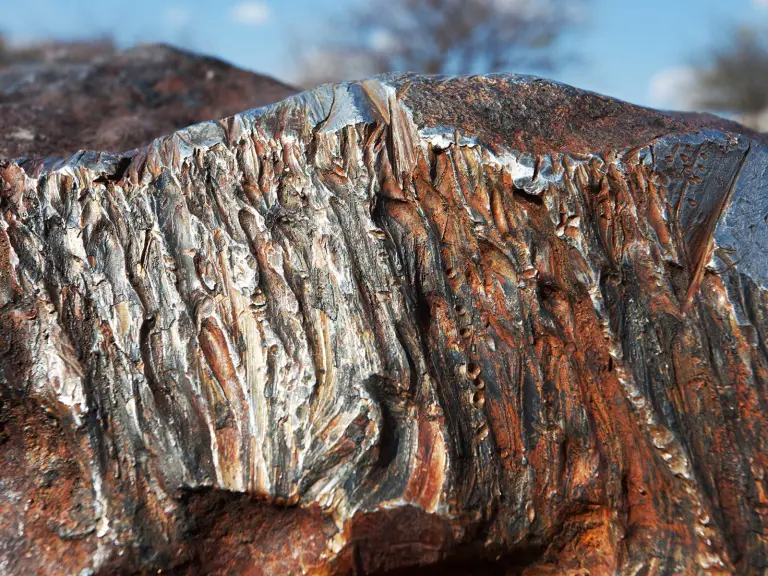
Visit Hoba—a place where the cosmic past and Earth’s present converge in an atmosphere of timeless mystery!



